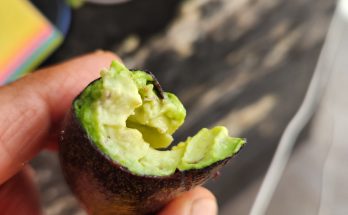By Mike Stoltz
I like lap swimming, and this is the first community I’ve lived in without a municipal pool that I can locate. A buddy from California, also a lap swimmer, was visiting for a month and told me about a fantastic lap pool and monthly pass available at the Rosewood Hotel not far from my house. It seemed a bit pricey to me, but I needed something to draw me away from my seemingly endless responsibilities of setting up life here and managing two confluent construction projects in two separate countries, so I pulled the trigger. It turns out that Rosewood is one of the more exclusive hotels in San Miguel. There are fresh bathrobes, sandals, spa services, and a dozen lotions and soaps. I’m not even sure exactly where you apply each one. There’s a tranquility room if you find yourself overwhelmed by the well-groomed Mexican staff’s never-ending offers of infused teas, citrus waters, or fresh towels and footwear. There are probably a couple of acres of manicured grounds with fountains, topiaries, upscale restaurants, and cabanas with poolside Bloody Marys.
I was in the gym in the aforementioned hotel not long ago and could not help but overhear a well-groomed, fit, and impeccably dressed trainer in his early to mid-20s talking to one of his clients. The client was an older, clearly well-heeled American woman not unfamiliar with Loreal. The trainer said, with quiet, yet melancholy, conviction, “Discrimination in San Miguel is evident wherever you go.” He continued, “If there are two people in a restaurant or other public setting, the proprietor or manager will naturally gravitate to the whiter of the two even if the browner of the two was there first.”
These statements struck a chord with me. While I’ve only been here just over four months, I have indeed experienced this preferential treatment first-hand, and I have to say, it makes me uncomfortable. So, I started asking some of the locals, largely under 40, if there was any merit to what I overheard from the trainer at the Rosewood Hotel. Sure enough, to my astonishment, there was not one Mexican who disagreed. A beautiful, poised, well-educated editor of a popular publication shook her head with assured agreement and commented, “It has happened to my family and me here a lot, particularly in restaurants.” A director of a local educational non-profit told me that there is a “thing” called “Whitexican.” He said it is largely in urban cities, but it’s making its impact countrywide. Curious about what I think is counterproductive and discriminatory groupthink, I wanted to know more.
And what better place to learn about pop culture than video streaming and the teetering-on-obsolescent Twitter à la Elon Musk. In the spring of 2020, the whiteness of Netflix Mexico’s programming returned as a topic of conversation. display media, this renewed discussion has been bolstered by the trend of calling out cosas de Whitexicans, i.e., media and cultural fads that showcase white (usually affluent) Mexicans. For instance, a widely popular tweet featuring the all-white cast pictures of “La Casa de las Flores” (2018-2020), “Control Z” (2020), “Made in Mexico” (2018), and “Monarca” (2019) points out that this is “what Mexicans look like according to Netflix.”
Moreover, “The Mexicanist”—which has a self-proclaimed identity as a current affairs, business, and cultural portal in both English and Spanish—describes “Whitexicans” as follows. “The ‘Whitexicans’ mix Spanish and English when they speak, brag about their trips on social networks, and try not to get together with the popular classes. The term defines people who show pride in Mexico abroad but adopt classist and racist attitudes at home.”
But what about here in San Miguel de Allende, which I have been describing to my friends back in California as “the Beverly Hills of Mexico?” (I just don’t want them to confuse what they are used to in Cabo and Tijuana with this awesome World Heritage treasure.)
Is it because there are so many American residents and tourists known for their generosity and tipping largesse in San Miguel that we are a beacon of a formidable income stream to those in the tourism and service industry? That’s anything but racist to me. But I don’t really know for sure. I just know I’m not really very comfortable with that whole noblesse oblige concept. I would just as soon local Mexican businesses channel the meanings of “service” and “servile” and tone down the latter as we really don’t like looking down on others. I don’t speak for all Americans, but I would like to think I speak for the majority.




